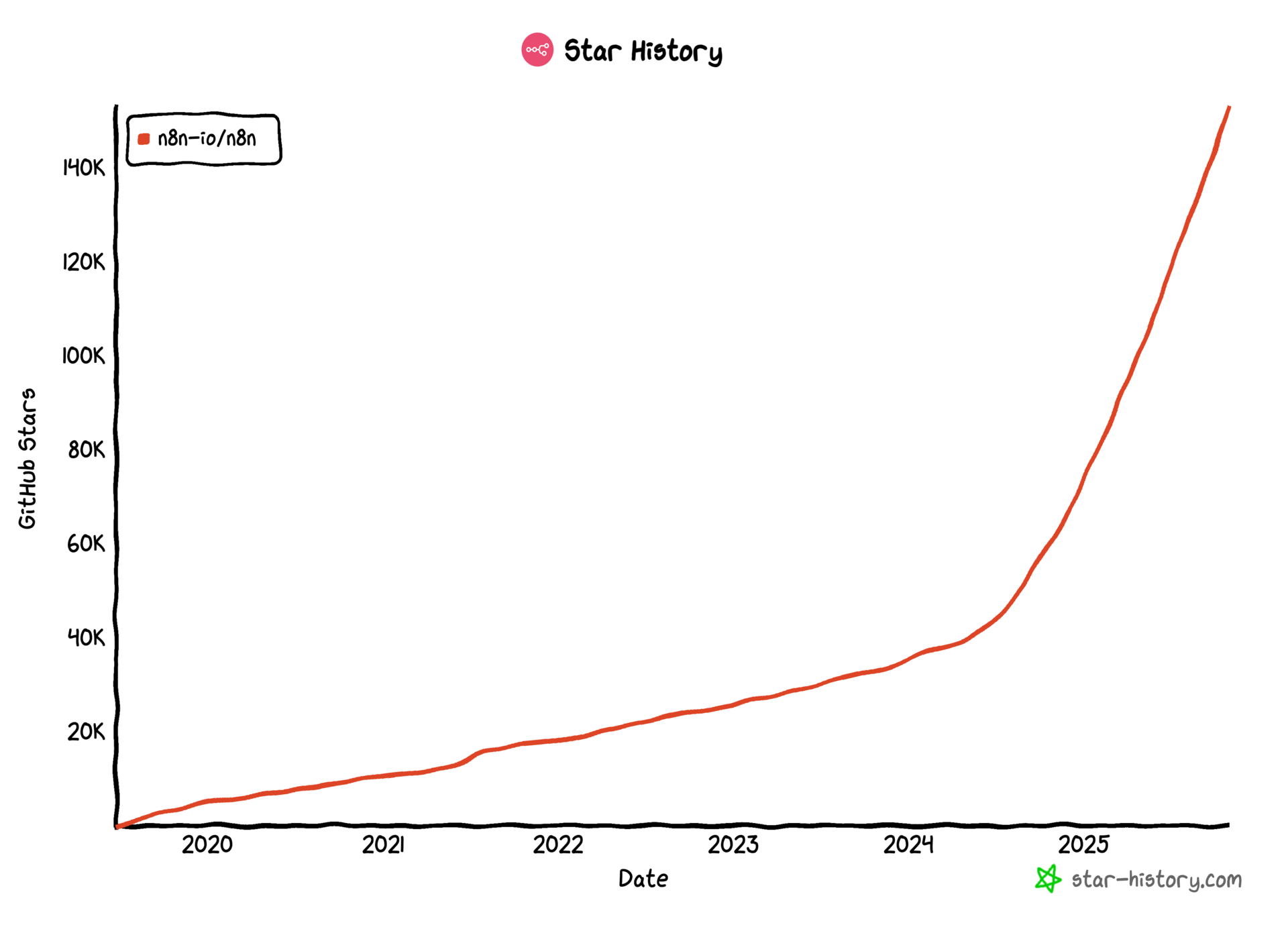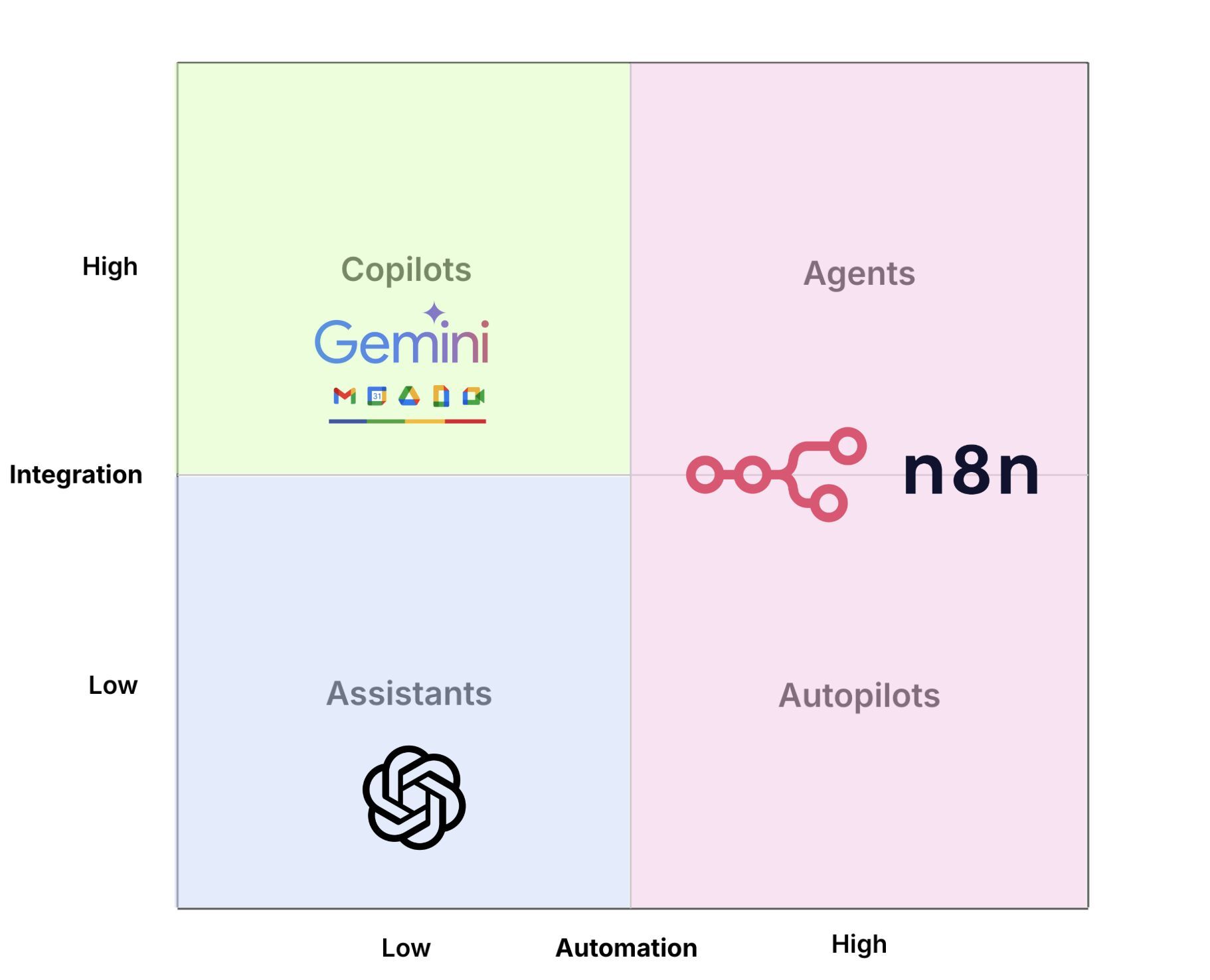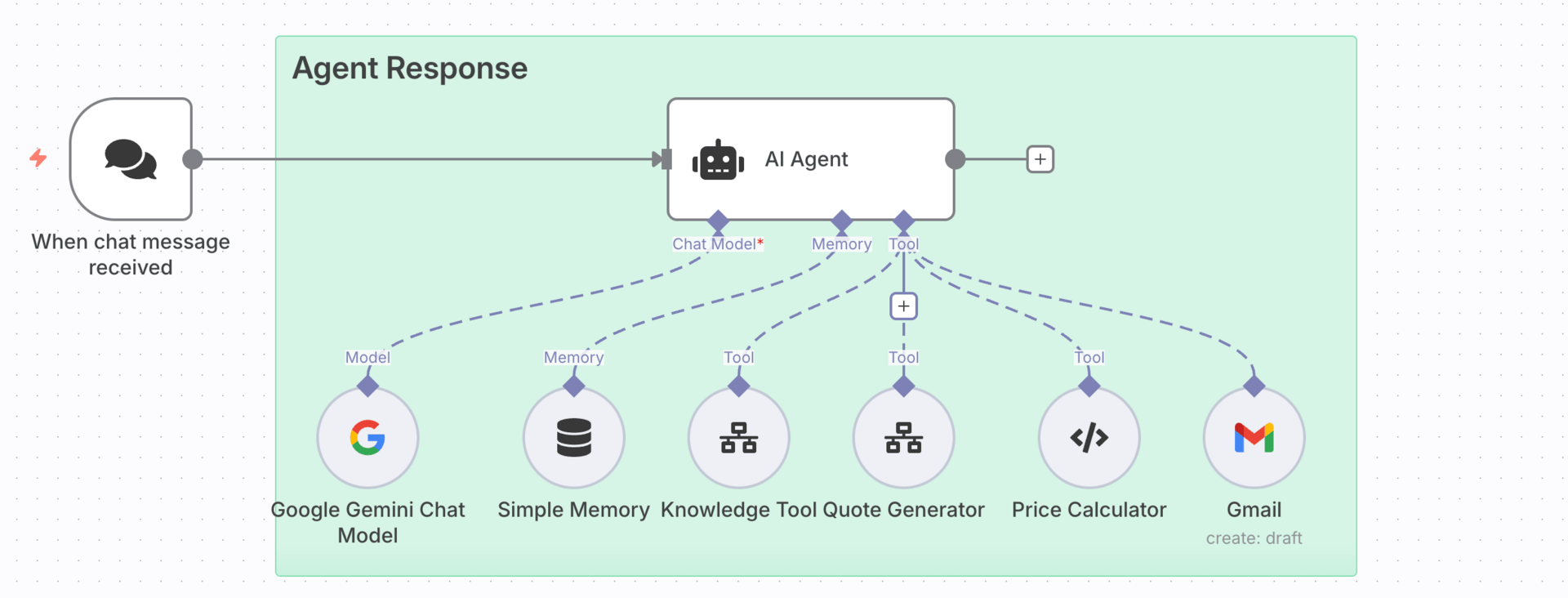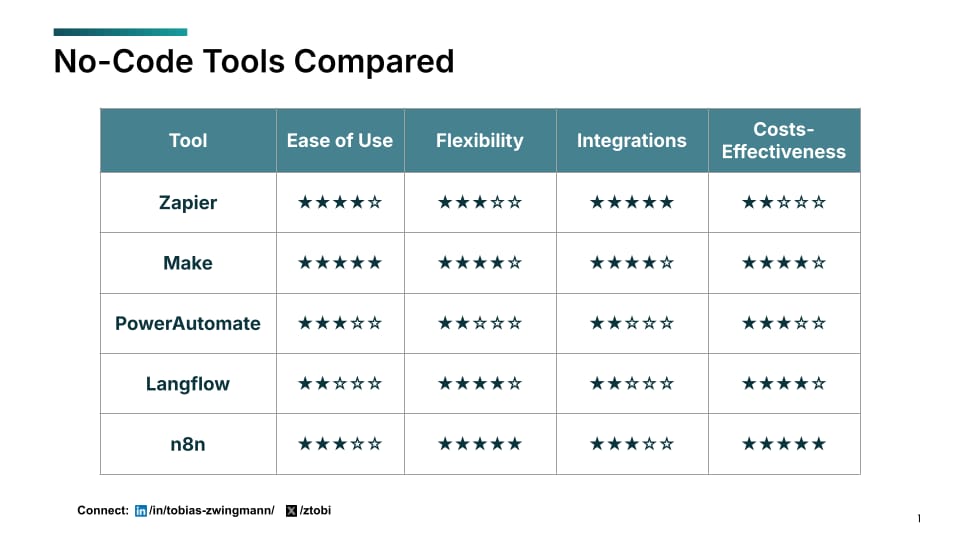- Profitable AI Weekly
- Posts
- Why I'm Building AI Solutions with n8n
Why I'm Building AI Solutions with n8n
And whether you should too
A friend at a large media company recently told me this story:
100+ news editors in a group chat. Big news breaks. The chat explodes with updates, context, conflicting info. New editors join mid-crisis and need to catch up fast, but scrolling through 500+ messages isn’t an option.
Someone mentions "AI". Weeks of debate follow: which AI tool, build vs. buy, procurement headaches… Meanwhile, nothing gets done.
My friend built an n8n workflow one afternoon. A "Catch me up quickly" bot: fetch the last 100 messages, summarize key developments, return a bulleted list. Runs locally, no vendor dependency. Done. Working.
"Good enough" beat "perfect".
I’m increasingly hearing stories like this – and seeing them in my consulting work. That's why I’ve doubled down on n8n this year: it’s the best tool I’ve found to build profitable AI workflows and agents in days, not months, while keeping full flexibility.
This isn’t a "you should use n8n" pitch. It’s no silver bullet and has real limitations (I’ll cover those). But for now, it’s the fastest path I know from idea to working AI system.
Let’s dive in!
What is n8n?
First things first: it’s pronounced "n-eight-n". If you’ve never heard of it, you’re not alone. But that’s changing fast.
n8n is a workflow automation platform founded in 2019 by Jan Oberhauser, a former visual effects artist turned programmer in Berlin – long before the AI boom. The idea: connect apps and APIs (basically anything online) with minimal code. Zapier made the concept mainstream; n8n made it more flexible.
Today, n8n GmbH (still led by Jan in Berlin) has raised $180 million in Series C funding, valuing the company at $2.5 billion. That makes it one of Germany’s most valuable startups.
But more important than valuation: n8n has been quietly winning over technical teams for years – and only recently, it’s really taken off:

n8n offers both a cloud version and a fully free, open-source self-hosted option. That self-hosting is what sets it apart – you control your infrastructure, keep your data where you want it, and avoid being locked into someone else’s pricing or roadmap.
Today, over 200,000 people use n8n. The community is active, the documentation solid, and the product mature. It’s trusted by teams worldwide, including Delivery Hero, Vodafone, Volkswagen, Microsoft, and Wayfair.
Where n8n Fits
Quick context using my 4 AI solution types: Assistant → Copilot → Autopilot → Agent.
n8n lives happily in the Autopilot/Agent space. It not only allows you to complete certain narrow, well-defined tasks on autopilot, but also run multi-step workflows with advanced logic, autonomous decision-making, and deep integrations in an agentic way.

Example tool stack across the 4 AI solution types
Comparison
There are tons of no-code/low-code tools out there and if I wanted to compare all of them I would be still sitting here next year. So let's focus on the platforms that are closest to n8n in terms of the audience and use cases.
Zapier is the biggest and most popular no-code platform. Founded in 2012 and based in San Francisco, it offers the widest app ecosystem with over 7,000 connectors. It’s reliable, with strong error handling and monitoring, and can handle high-volume workloads. But the pricing hurts at scale: you pay per task inside workflows, and those numbers add up really fast. Complex logic is also limited, with only basic code support.
Make (formerly Integromat) was also founded in 2012, but on the other side of the pond in the Czech Republic. It’s known for its visual, beginner-friendly approach to automation. With 2,000+ integrations, it offers less than Zapier, but it’s cheaper at scale and comes with full GDPR compliance – something especially popular in Europe. The biggest limitation is that once you need advanced logic or even light data transformation, you hit a wall. A dealbreaker for many technical workflows.
Power Automate deserves its own post. Launched in 2016 as part of Microsoft’s Power Platform, it’s the go-to tool for automating within Office 365, Azure, or Dynamics. If you’re deep in that ecosystem, it’s an easy pick – or is it? Because using it locks you even tighter into Microsoft’s stack, roadmap, and pricing. When clients ask what a Power Automate workflow will cost, my honest answer is: "it depends". (Yes, there are consultants who specialize just in Microsoft licensing.)
Langflow represents the wave of AI-specific tools launched “a.c.” (after ChatGPT). It’s a visual, low-code interface for building with the LangChain framework – more technical by design and still maturing.
Why I Keep Choosing n8n
I don't have strong opinions about tools. I use whatever works. And n8n works a lot. Here’s why:

AI Agent in n8n
Features: n8n can do pretty much everything that you can do in all of the tools above. Sure, Zapier has more integrations, but n8n comes with an HTTP request node and lots of pre-built authentications that let me wire up any service that has an API quickly.
Self-hosting capability: Being able to run n8n on your own infrastructure matters, especially for data-sensitive industries or in cases where you want to do a "quick POC" on the cloud, but don't want to rebuild everything when running internally. This fits my AI Gardener mentality perfectly.
Native code nodes: If your no-code automation canvas looks like a ball of yarn or you're in the 4th sub-workflow you did something wrong. Typically, this complexity happens when you need to wire-up different edge cases requiring different if-then-else loops. Often, this can be expressed with a 20-line code snippet. Which n8n supports natively in Javascript or in Python (which then gets translated into Javascript). The built-in AI function lets you generate code quickly from text. Helpful!
Pricing: n8n doesn't punish you for success. When your workflow starts processing 10,000 operations a month instead of 1,000, Zapier's pricing model makes you reconsider your choices. n8n's doesn't. In fact, the recent price update made it even more attractive, cutting the workflow limit from lower tiers.
Strong data transformation capabilities: You can manipulate, validate, and transform data right in the workflow. It's close to a fully-fledged ETL tool.
Strong AI support: Last not least - n8n has in my opinion the best integration of AI services. The agent node works like a charm. You can simply connect different models, configure memory, or even have your AI agent access other n8n workflows as a tool (which IMO makes MCP obsolete in a lot of cases). If you still need MCP, n8n supports that natively.
That’s why I keep coming back to n8n all the time.
Limitations
n8n isn’t a silver bullet. Here are some limitations that I found and that most n8n content skips.
Batch Processing: n8n is good for real-time and ad-hoc workflows, not so much big batch processing. If you want to crunch through 100K customer records overnight, n8n can do it but there might be a smarter way. If you want to update something as soon as something else happens somewhere, n8n is a good choice. Similar to when you want to run things on an automated trigger or schedule.
Staging/Production Environments: n8n doesn't have separate staging and production environments outside of the enterprise plan. I come back to juggling different workflows when testing. But if you need proper environment separation (and versioning), talk to enterprise sales – they have source control and environment features.
Heavy Load: If your real-time queue has hundreds or thousands of events in the backlog, n8n might struggle due to a lack of parallelization. There’s queue mode but if you’re operating at this scale, you’ll either find yourself in the enterprise tier quickly or entertain a custom DevOps team around it. To mitigate risks, I typically try to break workflows down into different independent increments. Instead of having one large flow, have multiple ones that call each other once something is done. Design for failure and include safe checkpoints.
Understand your use case before you scale. I've seen too many teams over-engineer solutions for problems they don't have yet!
Overall, this balance makes n8n the best choice for me when building AI workflows. Be it a prototype that can be shipped to (a first stage) production, or later scaled up or re-built using custom code (based on the n8n JSON which provides a first architecture).
Overall, here's my personal assessment of where n8n sits compared to the other tools:

Use Cases
I’ve used n8n successfully for use cases in the following areas:
AI-powered document processing: Fetch a PDF, extract text, send to an LLM for analysis, structure the output, and save to a database; all in one workflow.
Intelligent Teams/Slack assistants: Trigger by message, pull context from other sources if needed, generate responses with AI, and post back to channel.
Data enrichment: New lead comes in → pull company data from multiple APIs → enrich with AI analysis → update CRM with scored information.
Content repurposing workflows: Video transcript → article headline → create structured outline → style guide → write full blog / teaser / social posts from it.
AI agents with tool access: Build agents that can query databases, call APIs, search documentation, and execute multi-step tasks autonomously
Scheduled data analysis: Pull data from various sources daily, run AI analysis, generate reports, and distribute to stakeholders
n8n excels when you need to connect multiple systems, apply custom logic, involve AI, and ship quickly without writing a full application.

Video-to-Blog workflow in n8n
Conclusion
n8n is where automation meets AI in a way that actually ships.
It's not perfect. It has limitations. The learning curve is real. You'll hit scaling constraints if you're not thoughtful.
But it's the tool that's letting technical teams move from discussion to deployment in days instead of months. It's the tool that doesn't bankrupt you when you succeed. It's the tool that gives you still flexibility when you need it.
If you're stuck in tool paralysis, start here.
See you next Friday!
Tobias
Reply